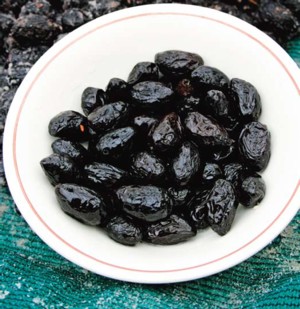All you need to know to grow your own olives.
The Ancient Greeks valued the olive as a symbol of peace and prosperity. It has been said that the power of Ancient Greece was made possible by the cultivation of the olive, providing rich fruits from rocky countryside that could produce little else. In Greek mythology, a dove brought an olive twig from Phoenicia to Athens to be planted on the Acropolis and become the Greeks’ first olive tree. The people dedicated the olive to the goddess Athena and Olympic champions were crowned with a wreath made of olive leaves.
Olive trees are now grown for the fruit and the wonderful, healthy oil pressed from it, though the leaves are also used to make health tonics with immune-boosting properties. These days, the trees are now so popular in Australia that you’ll find olive groves in every state and territory. If they can grow on rocky mountainsides in Greece, they can grow in virtually any Australian soils.
A number of olive varieties can be planted in your garden or even on the nature strip. Some of the more popular include Manzanillo, Spanish Queen, Verdale and, most popular of all, Kalamata. Even though you will find them growing all over the country, and even wild in some places, olives are known to thrive in more temperate climes: northern Victoria, South Australia and New South Wales.
Growing tips:
- Plant in full sun.
- Prune out the centre of the tree to create an open vase shape, allowing sunlight and air through to the centre.
- Fertilise every 3–6 months using manure or blood and bone.
- Will tolerate all types of soil conditions, including rocky, poor and sandy soils, but prefers deep, welldrained soils.
- Can be planted in large tubs or wine barrels for a number of years and will still produce good-quality fruit but will do better in the ground.
- Prepare the ground by digging a hole about 50cm deep and 70cm wide.
- Backfill the hole with composted soil so the root ball doesn’t sit too low.
- Gently tease the roots and place the tree in the hole, being careful not to plant it too deep or cover the graft with soil. The graft is situated near the base of the trunk and covering it will only weaken the graft and the tree’s ability to grow strong and healthy.
- Backfill the hole with composted soil and apply a thick layer of straw or garden mulch, water in well, then watch it grow.
Choosing a variety:
Choosing an olive variety isn’t as daunting as you’d think. The Olive Tree of choice of the more temperate zones of Australia is the Kalamata, but if you happen to live in a colder climate, like Melbourne, you’ll have to ignore that. Sadly, very little success has been recorded with the fruit productivity of the Kalamata variety in Melbourne. In most other states they grow like weeds. But don’t be disheartened if you want to grow olives in a colder climate.
Try these varieties:
- UC13A6 has an unromantic name but is a very large, round olive with an excellent flesh-to-pit ratio. It’s great as a table olive and is quite happy to grow in all climate conditions.
- Manzanillo is a medium-sized apple-shaped olive and the most widely planted variety in Australian groves. Its flesh has an excellent texture and it’s considered a “freestone” olive, meaning the seed is very easy to remove from the flesh.
- Koroneiki is one of the smallest olive varieties, counting for about 85 per cent of the olive trees grown on the island of Crete. Although a small fruiting variety, it a very high oil content and makes a great virgin oil.
Olives are important in our diets and not only taste good (in both the oil and whole form) but are rich in vitamin E, mono-unsaturated fats, minerals and antioxidants. They help to fight against diseases including cancer, arthritis, osteoporosis, constipation, inflammation and asthma. Here’s our method of preserving your own olives — and a great recipe:
Pressed Olives
Ingredients
10kg ripe black olives (preferably Kalamata)
1kg sea salt
1kg table salt
Olive oil
Fresh oregano or thyme
10kg weight (eg 3–4 bricks)
Method
1. Place olives in the middle of a large piece of hessian or shade cloth. Pour sea salt and table salt over them and mix thoroughly.
2. Wrap olives with the material and place a weight on top. (The weight helps squash the olives and drain the juice out.)
3. Over the next two weeks, check every two days and remix, making sure all the olives are covered with salt. After two weeks, remove the olives from the cloth and wash thoroughly to remove all the salt. Place the olives in a clean jar and fill it with olive oil. Add a piece of fresh oregano, thyme or your choice of herb, seal and store. Your pressed olives are ready to eat whenever you like. Maresi!
Olive Paste
If you love olives you’ll love this…
Ingredients
½kg marinated olives, pips removed
½ red capsicum
½ green capsicum
3 spring onions
4 garlic cloves
½ cup olive oil
4 branches parsley
4 stems mint
4 sweet basil leaves
Method
Place all ingredients in a blender and blend until the mixture has the consistency of a paste.
Tip: Spread on warm village bread and eat!





